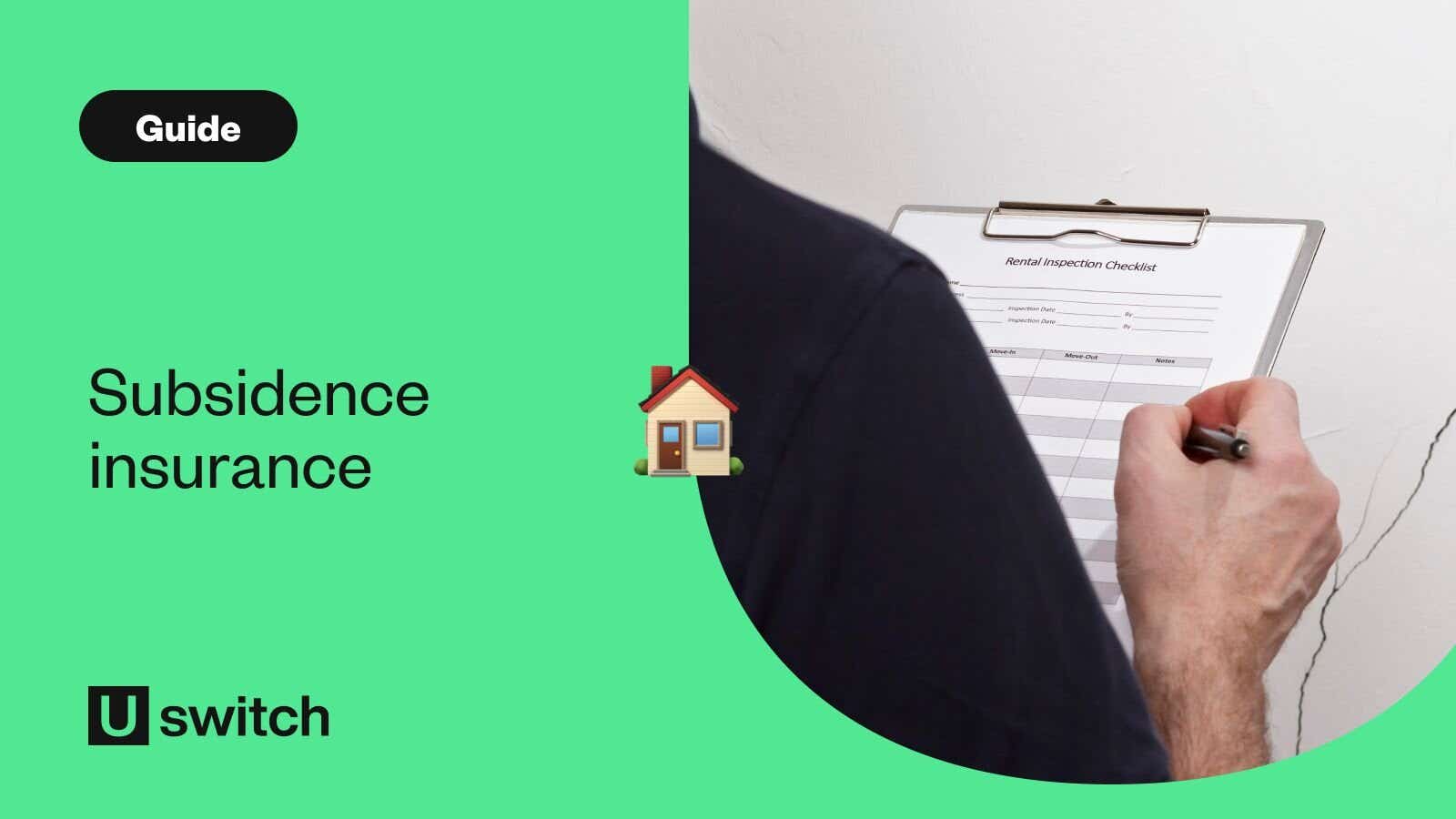Subsidence insurance


What is subsidence?
Subsidence is when the ground beneath your property moves downward, pulling walls, floors and foundations with it. It’s often caused by clay soils drying out during hot spells, leaking drainage pipes, or tree roots slowly munching away underground. You might spot cracks in walls, doors that stick, or windows that shift, these could be early warning signs.
Does home insurance cover subsidence?
It depends. You’ll need subsidence cover in your policy - it’s not always automatic, and it may come with a higher premium. Usually you'll need a specialised or non-standard home insurance policy if there is subsidence.
How do subsidence claims work?
- Call your insurer the moment you suspect subsidence. They’ll usually send someone to inspect the property.
- An engineer or surveyor investigates. They assess if it’s subsidence, shrinkage, settlement or something else.
- Claim approval and repair plan. If covered, the insurer commissions repairs. That means stabilising foundations, fixing walls, drains — whatever’s needed. Remember to check your policy to see how much you're covered for.
- After‑care and monitoring. Professionals monitor the home during and after work to ensure stability.
Insurers often ask for historical subsidence records, so always mention any past issues when you take out a policy or renew it. Hiding previous incidents could invalidate future claims.
How to check for and identify subsidence
Be proactive about spotting trouble early:
- Watch your walls. Fine cracks are normal, but those wider than 3mm (about the width of a pencil) may signal subsidence.
- Monitor doors and windows. Check if they start to jam or don’t fit square anymore.
- Look at plaster work. Bulging or cracking plaster, especially near ceilings or ground-floor joints, is a red flag.
- Keep an eye on the soil. Pools of water near your property and gaps near drains or foundation lines can all hint at shifting ground.
If your insurer visits, the engineer may install tell-tale pins in walls - checking movement over a few weeks tells them whether ground movement is ongoing.
How to avoid subsidence damage
Some maintenance and planning can reduce risk:
- Mind your trees and shrubs. Keep large roots well away from foundations. A good rule: tree height shouldn’t be more than twice the distance to your foundations.
- Inspect drainage and plumbing. Fix leaking pipes fast, water running under your home can wash away soil.
- Manage soil moisture. During dry spells, soak nearby soil to prevent too much shrinkage. And don’t forget drainage gutters and soakaways – ensure they’re clean and working.
- Regular upkeep. Spotting damp, rot, or cracks early means you catch subsidence before it fully develops.
If installing a driveway or extending, get a structural survey - subsidence risk depends heavily on the ground conditions.
Compare home insurance quotes
See a range of home insurance quotes in just a few minutes when you compare with Uswitch
FAQs
How long do you have to declare subsidence for insurance?
You must declare any known subsidence when you take out or renew a policy. That means anytime you’ve had subsidence in the past, even if it’s been fixed. Insurers usually ask if you have ever had subsidence, settlement or ground movement.
How long does a subsidence claim affect insurance?
A subsidence claim stays on your record for around 5 to 7 years. It can make premiums higher and harder to switch providers during that time.
How to tell the difference between subsidence and settlement?
Subsidence is ground sinking away. Settlement is the normal “settling” movement of a new home. Settlement cracks are usually minor, hairline, horizontal and appear in the first two years after build. Subsidence cracks are wider, vertical or diagonal, and may reappear or grow over time. If you're unsure, it's worth finding out when your home was built.
How is subsidence fixed?
Subsidence is fixed by stabilising the soil beneath foundations, via piles or underpinning, and repairing damage – replastering, re‑rendering and re‑tiling. It can take a few months of construction plus extended monitoring to ensure the home remains stable.